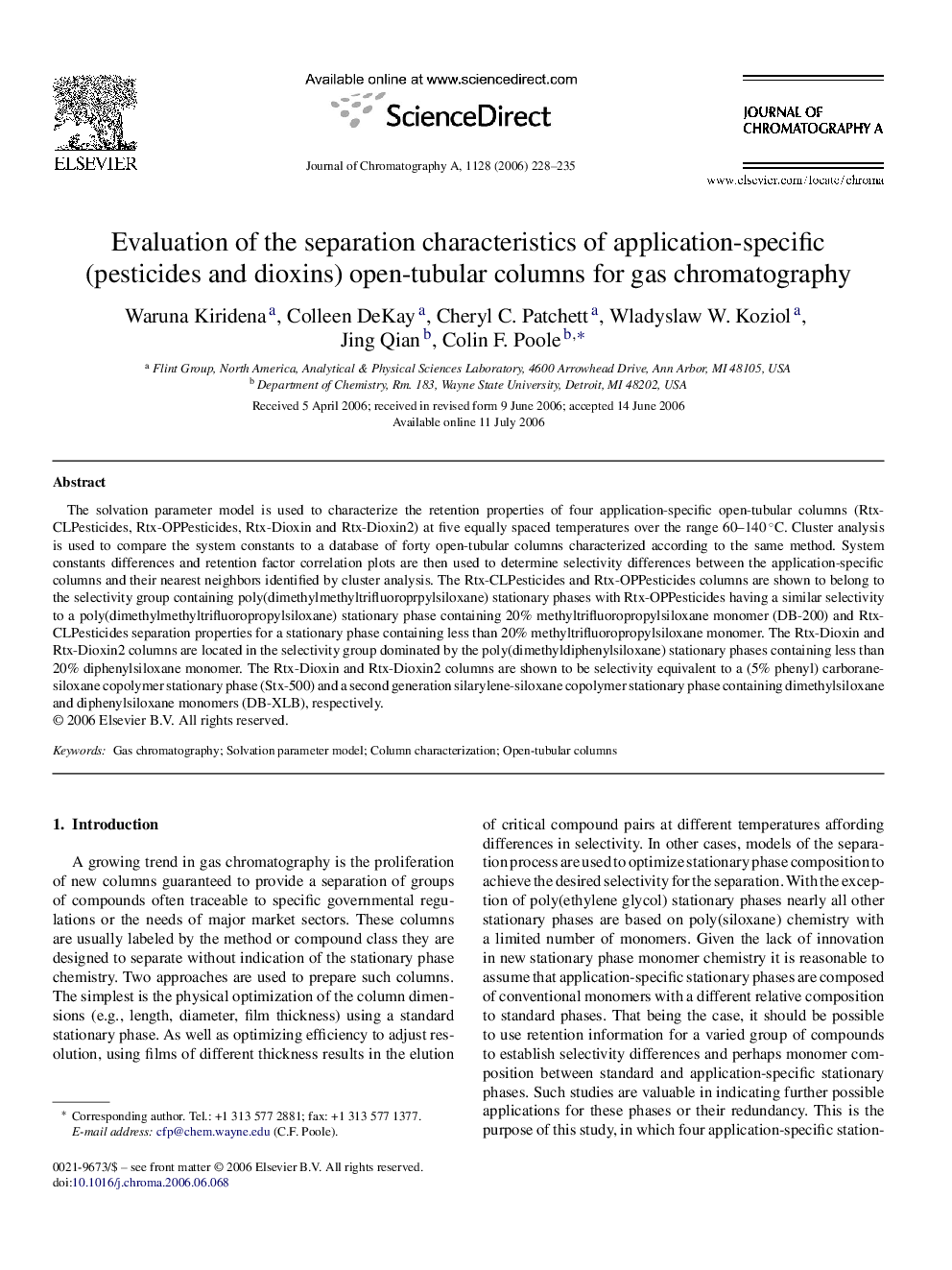| Article ID | Journal | Published Year | Pages | File Type |
|---|---|---|---|---|
| 1211455 | Journal of Chromatography A | 2006 | 8 Pages |
Abstract
The solvation parameter model is used to characterize the retention properties of four application-specific open-tubular columns (Rtx-CLPesticides, Rtx-OPPesticides, Rtx-Dioxin and Rtx-Dioxin2) at five equally spaced temperatures over the range 60-140 °C. Cluster analysis is used to compare the system constants to a database of forty open-tubular columns characterized according to the same method. System constants differences and retention factor correlation plots are then used to determine selectivity differences between the application-specific columns and their nearest neighbors identified by cluster analysis. The Rtx-CLPesticides and Rtx-OPPesticides columns are shown to belong to the selectivity group containing poly(dimethylmethyltrifluoroprpylsiloxane) stationary phases with Rtx-OPPesticides having a similar selectivity to a poly(dimethylmethyltrifluoropropylsiloxane) stationary phase containing 20% methyltrifluoropropylsiloxane monomer (DB-200) and Rtx-CLPesticides separation properties for a stationary phase containing less than 20% methyltrifluoropropylsiloxane monomer. The Rtx-Dioxin and Rtx-Dioxin2 columns are located in the selectivity group dominated by the poly(dimethyldiphenylsiloxane) stationary phases containing less than 20% diphenylsiloxane monomer. The Rtx-Dioxin and Rtx-Dioxin2 columns are shown to be selectivity equivalent to a (5% phenyl) carborane-siloxane copolymer stationary phase (Stx-500) and a second generation silarylene-siloxane copolymer stationary phase containing dimethylsiloxane and diphenylsiloxane monomers (DB-XLB), respectively.
Related Topics
Physical Sciences and Engineering
Chemistry
Analytical Chemistry
Authors
Waruna Kiridena, Colleen DeKay, Cheryl C. Patchett, Wladyslaw W. Koziol, Jing Qian, Colin F. Poole,
